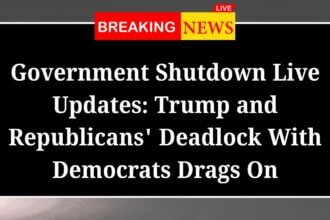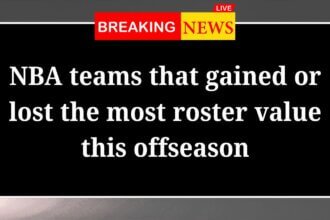New Updates on Student Loan Forgiveness Programs: What Borrowers Need to Know
- Understanding the Recent Changes
- Background on Student Loan Forgiveness
- Key Updates from the Department of Education
- The Impact on Borrowers
- Broader Context of Student Loan Debt Relief
- Analysis of Current Trends
- What’s Next for Borrowers?
- The Importance of Awareness and Education
- The Role of Technology in Streamlining Processes
- An Ongoing Commitment to Reform
- FAQs
As the Biden administration continues to grapple with the complexities of student loan debt relief, the recent updates on forgiveness programs have sparked renewed interest among borrowers. With millions of Americans affected, the need for clarity has never been more pressing. The U.S. Department of Education recently announced new measures aimed at providing relief to borrowers and reforming existing programs.
Understanding the Recent Changes
The updates, announced in late October 2023, aim to streamline the process of student loan forgiveness and provide clearer pathways for borrowers seeking relief. The changes come amid the ongoing legal battles that have delayed the implementation of broader student debt cancellation initiatives.
According to the Department of Education, the updates will impact several existing programs, including Public Service Loan Forgiveness (PSLF) and income-driven repayment plans. These adjustments aim to simplify the application process and ensure that borrowers can access the relief they are entitled to without unnecessary hurdles.
Background on Student Loan Forgiveness
Student loan debt in the United States has reached staggering levels, with borrowers collectively owing over $1.7 trillion. The issue has garnered significant attention from policymakers, advocates, and the general public, leading to various proposals for debt cancellation and reform.
The PSLF program, established in 2007, was designed to forgive federal student loans for borrowers who dedicate ten years of their careers to public service. However, the program has faced criticism for its complicated requirements, resulting in many borrowers being denied forgiveness despite meeting the terms.
The Biden administration has made efforts to reform the PSLF program, announcing temporary changes that would allow borrowers to receive credit for past work with non-profit organizations and other qualifying employment. These changes are intended to help those who have been erroneously denied relief in the past.
Key Updates from the Department of Education
The recent updates from the Department of Education include the following key changes:
1. Streamlined Application Process: Borrowers seeking PSLF will benefit from a more straightforward application process, reducing the documentation required to prove eligibility. This is particularly crucial for those who may have had their applications denied due to incomplete paperwork.
2. Automatic Credit for Qualifying Payments: The new measures will also offer automatic credit for qualifying payments made under income-driven repayment plans. This aims to ensure that borrowers receive the appropriate credit for their payment history, regardless of the specific repayment plan they are enrolled in.
3. Expanded Eligibility for Forgiveness: The updates will broaden the eligibility criteria for certain forgiveness programs, particularly for those working in public service roles that may not have been recognized previously. This change is intended to acknowledge the contributions of essential workers in fields like education, healthcare, and social services.
The Impact on Borrowers
These changes are expected to have a significant impact on borrowers who have been struggling with their student loan debt. According to a report from the Brookings Institution, nearly 30% of borrowers are expected to qualify for some form of debt relief under the revised guidelines.
In a statement regarding the updates, U.S. Secretary of Education Miguel Cardona emphasized the administration’s commitment to supporting borrowers. “We are dedicated to ensuring that every borrower has the opportunity to achieve financial stability. These updates are a step forward in making student loan forgiveness accessible to those who need it most,” he said.
Broader Context of Student Loan Debt Relief
The updates come at a time when the Biden administration’s ambitious plans for widespread student debt cancellation face legal challenges. A Supreme Court decision in June 2023 blocked a proposed plan to forgive $400 billion in federal student loans, leading to uncertainty about the future of debt relief initiatives.
Despite these challenges, the administration’s focus remains on providing targeted relief where possible. The recent updates reflect a growing recognition of the need for reform within the student loan system, particularly in light of the disproportionate impact that student debt has on low-income borrowers and communities of color.
Analysis of Current Trends
The ongoing evolution of student loan forgiveness programs reflects broader trends in higher education financing and the increasing urgency for reform. As more borrowers become aware of their options, the demand for clear, accessible information has risen.
A survey conducted by the Student Debt Crisis Center revealed that over 60% of borrowers are unaware of the eligibility requirements for forgiveness programs. This highlights the importance of not only implementing changes but also effectively communicating these updates to those who will benefit from them.
What’s Next for Borrowers?
As borrowers navigate the new landscape of student loan forgiveness, staying informed will be crucial. The Department of Education has committed to providing resources and updates to help borrowers understand their options.
In the coming months, additional guidance is expected, particularly regarding the implementation of these new measures. Borrowers are encouraged to check their servicer’s website regularly and take advantage of available resources to ensure they do not miss out on potential relief.
The Importance of Awareness and Education
With the complexity surrounding student loan forgiveness programs, the need for awareness is paramount. Many borrowers may not know about the various options available or may feel overwhelmed by the application processes. Educational campaigns initiated by the Department of Education aim to bridge this gap, ensuring that borrowers are equipped with the necessary information to navigate their financial responsibilities.
The Department has also begun collaborating with non-profit organizations and community groups to reach underserved populations who may be disproportionately impacted by student loan debt. These partnerships are crucial in disseminating information and providing assistance to those who need it most.
The Role of Technology in Streamlining Processes
In an age where technology is at the forefront of service delivery, the Department of Education is also exploring digital solutions to simplify the loan forgiveness process. This includes the potential introduction of mobile applications and online platforms that allow borrowers to track their eligibility, payments, and application status in real-time.
By leveraging technology, the Department aims to create a more user-friendly experience for borrowers, reducing the anxiety associated with navigating the forgiveness landscape. The expectation is that these tools will empower borrowers to take charge of their financial futures.
An Ongoing Commitment to Reform
The recent updates signify the Biden administration’s ongoing commitment to reforming the student loan forgiveness landscape. As legal battles continue, these incremental changes may provide immediate relief to many borrowers while the broader issues are addressed.
Ensuring that the most vulnerable populations receive the support they need will remain a priority. The focus will be on creating a more equitable system that recognizes the diverse contributions of workers across various sectors.
FAQs
Q: How do I apply for student loan forgiveness?
A: Borrowers can apply for forgiveness through their loan servicer. It’s recommended to review the specific requirements for each program, such as the Public Service Loan Forgiveness (PSLF) application process.
Q: What changes have been made to the PSLF program?
A: The recent updates to the PSLF program include a streamlined application process and automatic credit for qualifying payments, making it easier for borrowers to receive forgiveness.
Q: Am I eligible for student loan forgiveness?
A: Eligibility varies by program. Generally, borrowers working in public service roles or those enrolled in income-driven repayment plans may qualify for forgiveness. It’s advisable to consult your loan servicer for personalized information.
Q: What should I do if I have been denied forgiveness in the past?
A: If you have previously been denied forgiveness, it’s essential to review the new guidelines and consider reapplying under the updated terms. Your loan servicer can provide guidance on the next steps.







